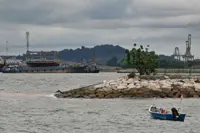As DBKL works towards constructing a high-capacity groundwater storage structure under Kuala Lumpur to prevent flash floods, StarMetro finds out what specialists in the field think about this multibillion-ringgit project and gets their perspective on viable options to the long-standing issue
Kuala Lumpur City Hall’s (DBKL) feasibility study on building an underground storage system to mitigate flooding should be nearing its completion date.
Already a subscriber? Log in
Save 30% OFF The Star Digital Access
Cancel anytime. Ad-free. Unlimited access with perks.





